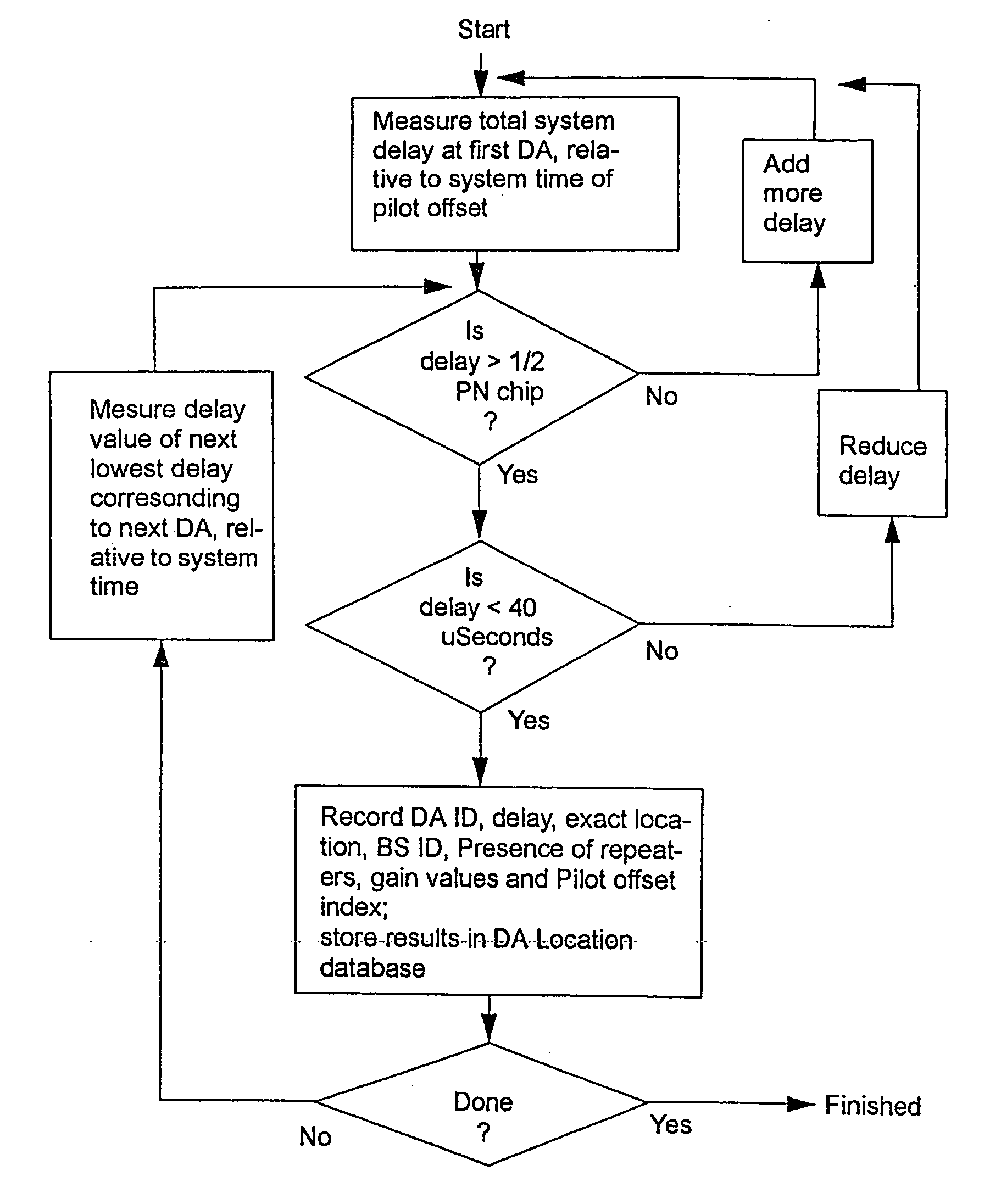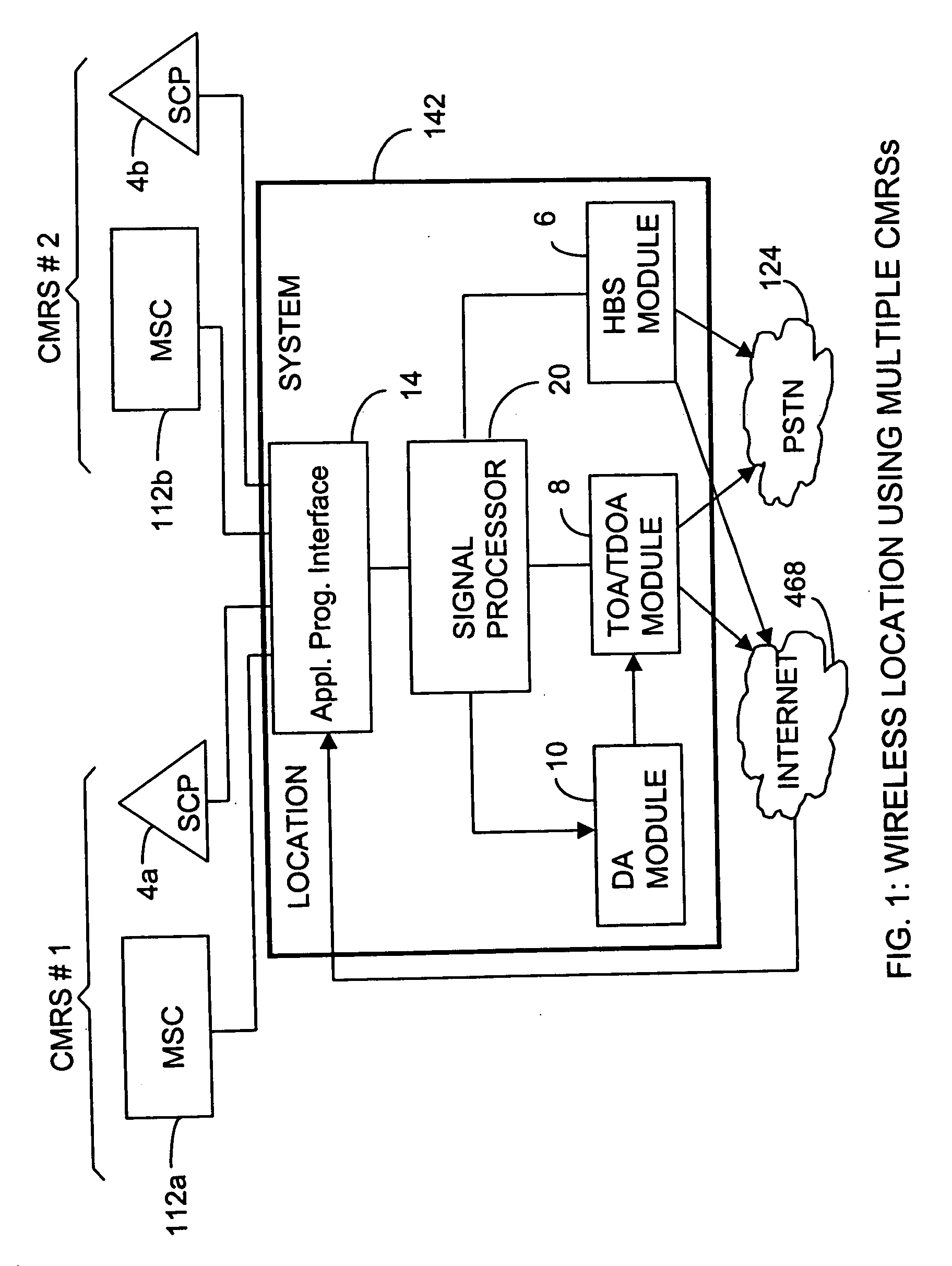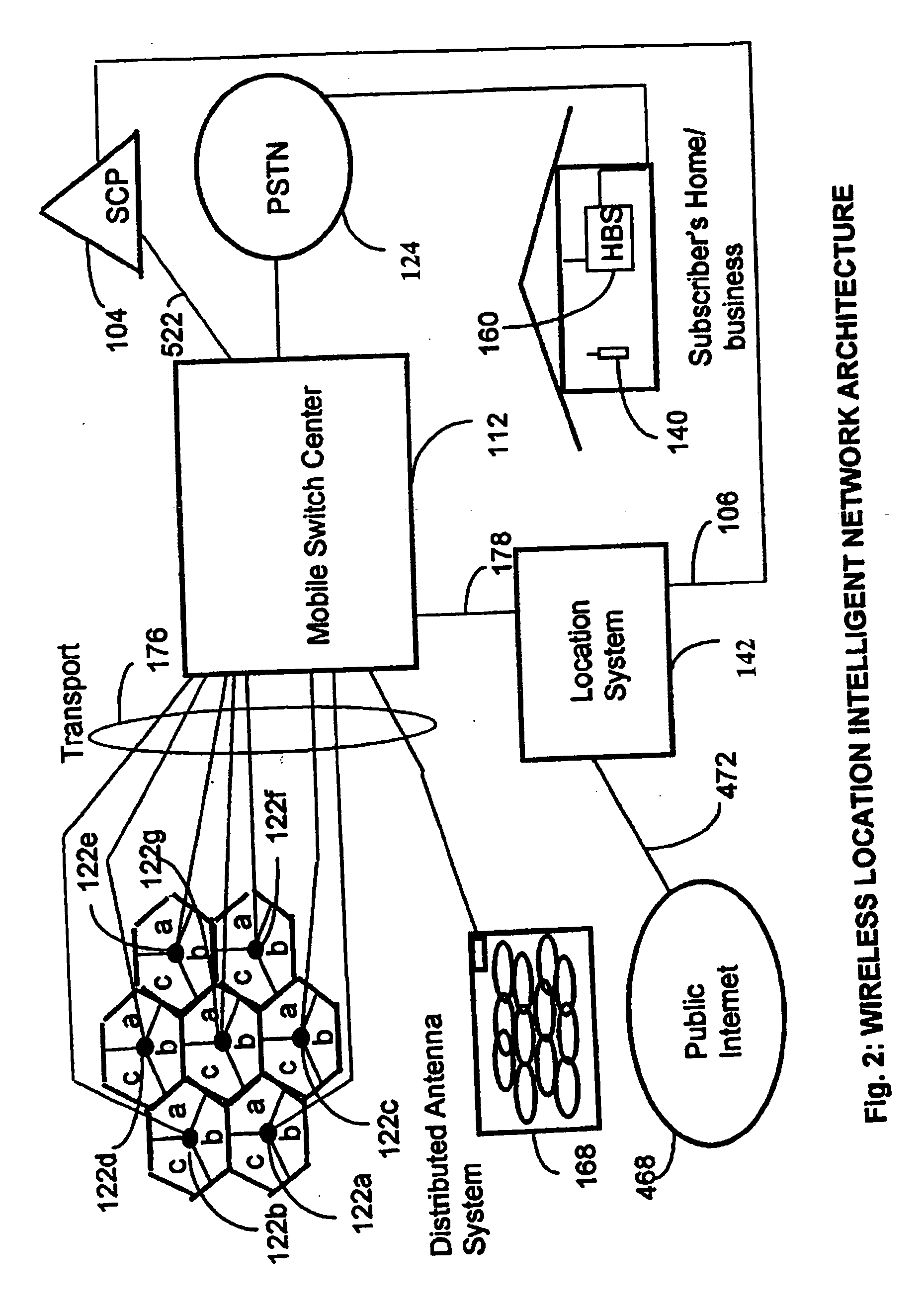Locating a mobile station and applications therefor
a mobile station and application technology, applied in the field of system and method for locating people or objects, can solve the problems of high cost, special-purpose electronics are required, and the system is generally only effective in line-of-sight conditions, so as to improve telephony coverage, accurately locate people and/or objects, and ensure the effect of signal discrimination
- Summary
- Abstract
- Description
- Claims
- Application Information
AI Technical Summary
Benefits of technology
Problems solved by technology
Method used
Image
Examples
Embodiment Construction
[0282] Various digital wireless communication standards have been introduced such as code division multiple access (CDMA) and Time Division Multiple Access (TDMA) (e.g., Global Systems Mobile (GSM). These standards provide numerous enhancements for advancing the quality and communication capacity for wireless applications. Referring to CDMA, this standard is described in the Telephone Industries Association standard IS-95, for frequencies below 1 GHz, and in J-STD-008, the Wideband Spread-Spectrum Digital Cellular System Dual-Mode Mobile Station-Base station Compatibility Standard, for frequencies in the 1.8-1.9 GHz frequency bands.
[0283] Additionally, CDMA general principles have been described, for example, in U.S. Pat. No. 5,109,390, Diversity Receiver in a CDMA Cellular Telephone System, by Gilhousen, et al, filed Nov. 7, 1989. There are numerous advantages of such digital wireless technologies such as CDMA radio technology. For example, the CDMA spread spectrum scheme exploits...
PUM
 Login to View More
Login to View More Abstract
Description
Claims
Application Information
 Login to View More
Login to View More - R&D
- Intellectual Property
- Life Sciences
- Materials
- Tech Scout
- Unparalleled Data Quality
- Higher Quality Content
- 60% Fewer Hallucinations
Browse by: Latest US Patents, China's latest patents, Technical Efficacy Thesaurus, Application Domain, Technology Topic, Popular Technical Reports.
© 2025 PatSnap. All rights reserved.Legal|Privacy policy|Modern Slavery Act Transparency Statement|Sitemap|About US| Contact US: help@patsnap.com



